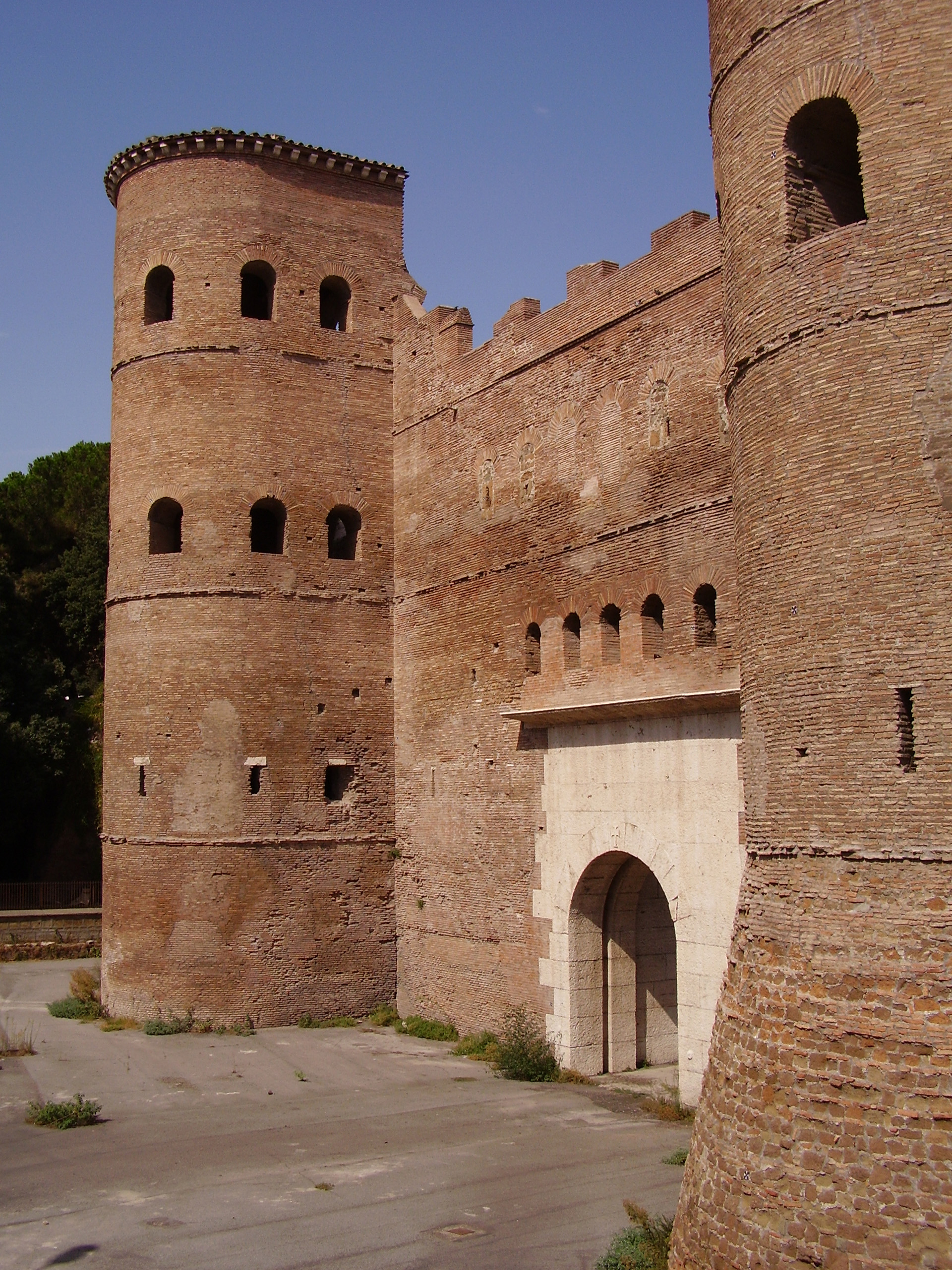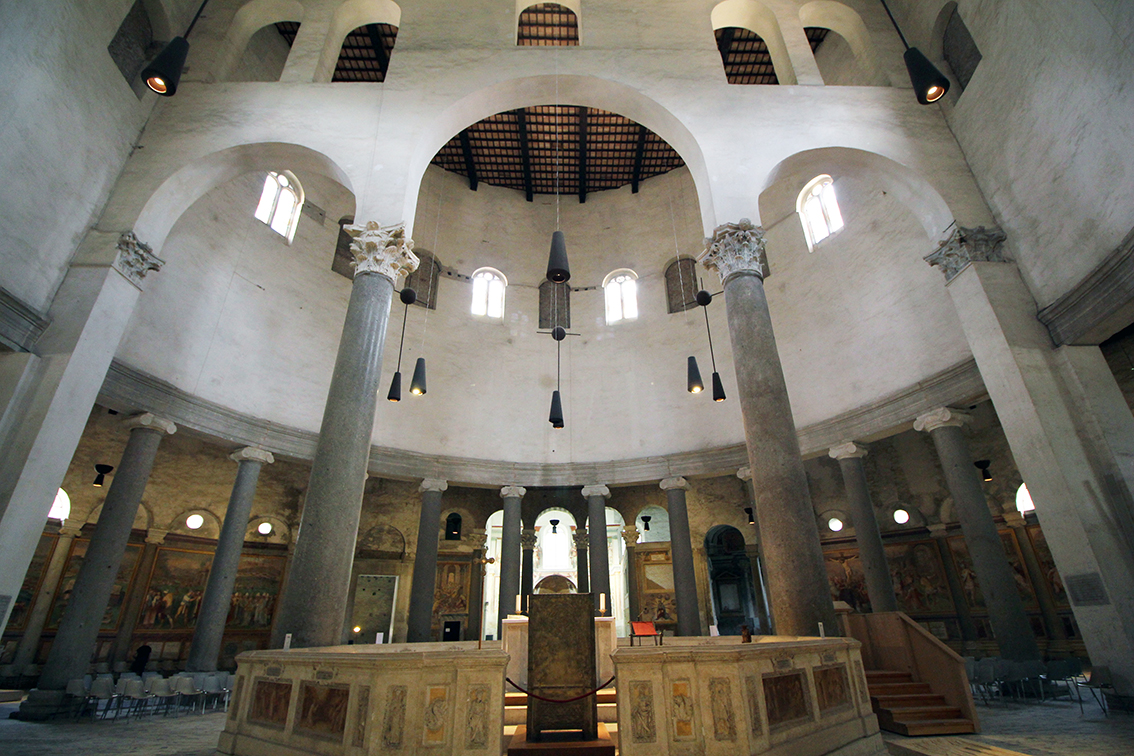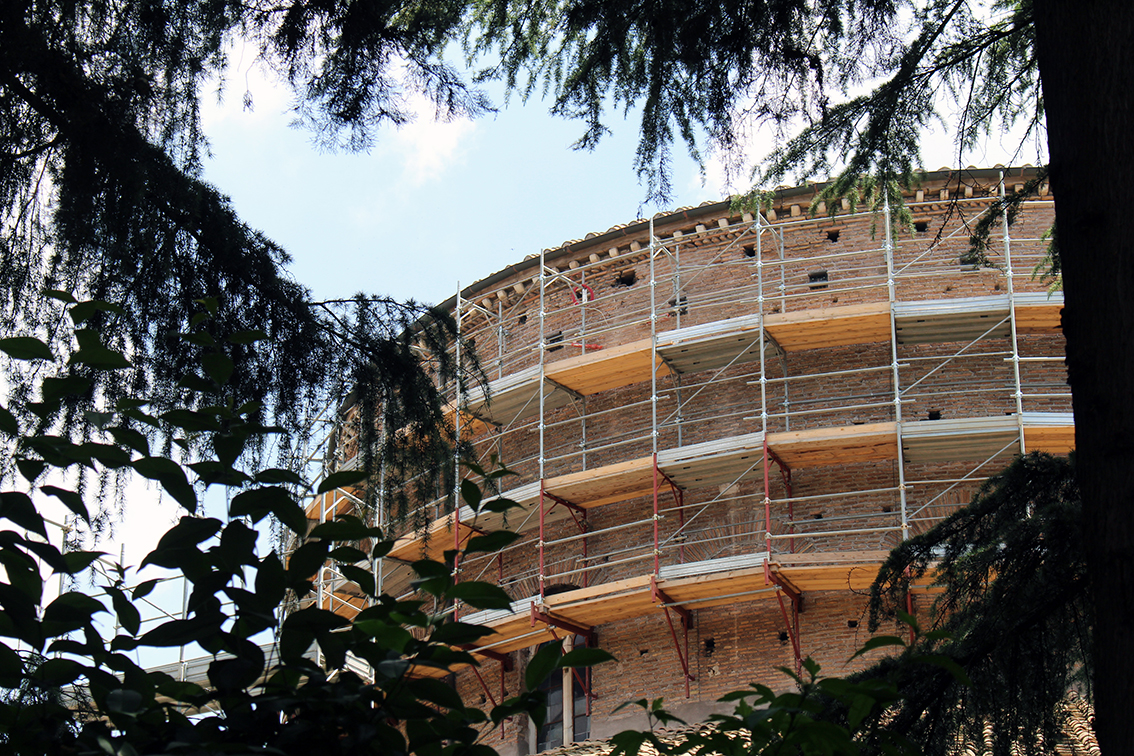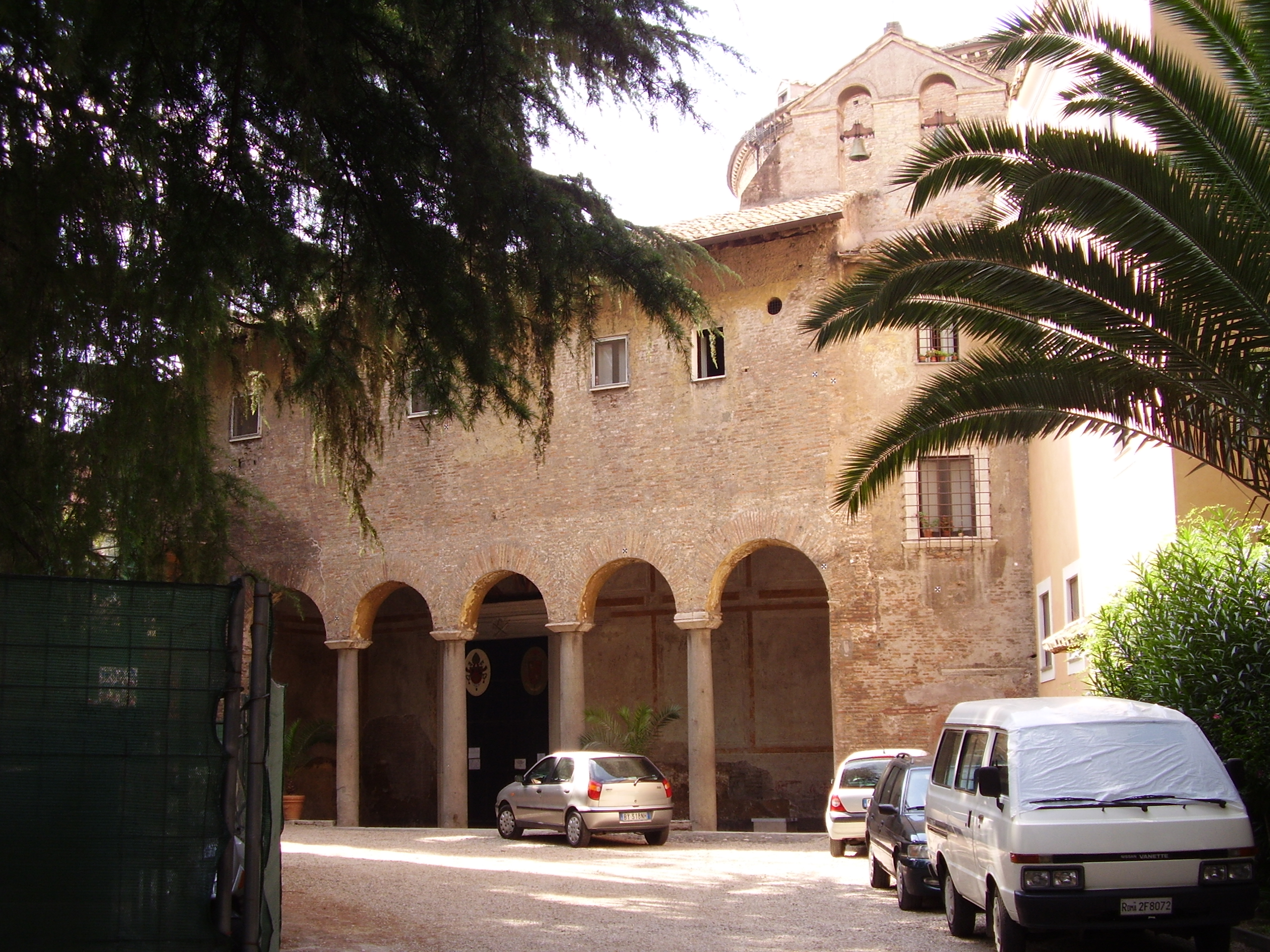The C line interacts with historic buildings and highly valuable monuments along its route. To ensure the safeguarding of a unique heritage protected by UNESCO, the Client Roma Metropolitane entrusted the General Contractor with the preparation, prior to the drafting of the Final Project of the T2 and T3 sections, of a study of interaction with the monumental heritage and with the historic buildings affected by the construction of Line C.
The Line-Monuments interaction study provided valuable technical and scientific support in defining the safeguarding interventions for the monuments and the related monitoring project.
As part of the study, for each of the 56 monuments, monumental areas, and historic buildings, the following activities were carried out:
Reconstruction, through extensive research at the properties and archives, of the “architectural history” of the buildings, verifying how structural interventions carried out in the past may have modified their static behaviour;
Survey and photographic documentation, with a high degree of detail, of the cracking pattern present today;
Definition, with in situ investigations, of the types and geometries of the foundation structures;
Analysis, with the most modern diagnostic investigation techniques, of the mechanical properties and the constitutive bonds of the structural elements and the materials used for the construction;
Construction of complex mathematical models, thanks to particular software, capable of faithfully reproducing the monument / historic building;
Calculation, based on project data, of the subsidence basins induced by excavations and of the induced stress regime in correspondence with the structural elements;
Design of an adequate monitoring system;
Design of safeguarding interventions aimed at minimizing the induced effects.
The above-mentioned activities were entrusted to the most qualified operators among those operating in the sector, organized in 7 Specialist Work Groups.
Moreover, considering the value of the heritage to be protected, based on the previous experience of consolidating the Tower of Pisa, a multidisciplinary Technical Scientific Committee was established, composed of the most authoritative experts in the European panorama of underground works design in urban environments.
 OLYMPUS DIGITAL CAMERA
OLYMPUS DIGITAL CAMERA
The Technical Scientific Committee (CTS)
The Technical Scientific Committee (CTS) is a multidisciplinary specialist body made up of a small and selected group of university professors and experts in various subjects : Conservation and Restoration, Structural Engineering, Tunnel Construction Technique, Geotechnical Engineering and Geology.
The CTS provides a high level of consultancy to Metro C ScpA and the Client for all aspects of the line-monuments interaction, during the design of the new Line C, in the stretch that affects the Historic Centre.
The fundamental function of the CTS is to ensure a high methodological level of studies and controls, carried out by highly specialized structures, to minimize the risks deriving from the construction of tunnels that interact with the overlying historical-artistic heritage.
The CTS coordinates, with guiding and control functions, the work groups of the following disciplines:
These studies are aimed at analysing the interaction between the excavation of tunnels and pre-existing buildings, taking into account their state of conservation, the geotechnical conditions of the subsoil, and the adopted excavation method.
The results allow the preparation of a monitoring scheme of the buildings affected by the phenomena of interaction with the tunnels, identifying the monuments and historic buildings that may require safeguarding interventions, preferably of a temporary and reversible nature.
In carrying out its activities, the CTS regularly interacts with the person in charge of the procedure of Roma Metropolitane and with all the institutions responsible for the protection of the archaeological and historical-artistic heritage.
CHECK UP PHASES
First phase: selection
In the first phase, preliminary checks are made for line-monument interaction, in order to identify the most sensitive points to be analysed in the area between Ponte Vittorio and the Colosseum. The first phase mainly involves the geotechnical engineering work group.
Second phase: historical reconstruction
In the second phase, a historical/architectural and structural analysis of the 40 buildings and 11 monuments is carried out, with topographic surveys of both the foundations and the surface part.
In this phase, the cadastral plans are examined, the type and depth of the foundations and the restorations that have taken place over time and those that could have altered the statics of the building are verified.
If necessary, additional surveys are also carried out (core drilling or tomography) to compare them with the paper documents.
The result of these investigations is a real radiography of the building, essential for drafting a historical study for each monument or building.

Third phase: risk map
Once all the elements on the condition/preservation of the buildings have been determined, the vulnerability indices of each building are identified in order to draw up a risk map.
Fourth phase: structural simulation
In the fourth phase, based on what has been verified in the field, 3D models of the state of the buildings are created and the effect of the tunnel excavation on the foundations is simulated. At this point, the following two possible scenarios are presented:
- The excavation does not represent a risk and therefore the building is able to absorb the stresses deriving from it.
- The structure of the building does not withstand the vibrations/stresses induced by the excavation of the line tunnels and in this case it is necessary to adopt specific safeguarding interventions.
 OLYMPUS DIGITAL CAMERA
OLYMPUS DIGITAL CAMERA
Fifth phase: safeguarding interventions
The possible safeguarding interventions are:
- Revision of project solutions with modification of the route
- Preventive defence on the ground, for example with supervisory works such as containment micro piles
- Preventive structural consolidation of the building
Sixth phase: monitoring
The sixth and final phase consists of the development of a sophisticated monitoring system (in operation for the T3 route) that continuously monitors for the duration of the works in order to verify “live” every small change compared to the previous situation in relation to the underground advancement of the tunnels.
Monitoring is carried out with laser and optical techniques, inclinometers, electric meters, thermometers and accelerometers for vibration control.
The results of the monitoring flow into a database specifically created and allow all interested parties to follow, in real time, the evolution of the deformation phenomena. Furthermore, they allow timely reporting of the need for any changes to the tunnel excavation process.

Monumental buildings and monuments subjected to the entire check-up phase:
Aurelian Walls at Porta Asinaria
Aurelian Walls at Porta Metronia
Church of Santa Maria in Domnica
Church of Santo Stefano Rotondo
Celimontano Aqueduct
Colosseum
Basilica of Maxentius
Columns of the Forum of Nerva
Forum of Caesar
Victor Emmanuel II Monument
Trajan’s Column
Venice Palace and Museum
Church of San Marco
Church of Santa Maria di Loreto
Palazzo Valentini and Church of SS. Name of Mary
Palazzo della Vecchia Zecca
Palazzo Bonaparte
Doria Pamphilj Administration
Church of the Stigmata and relevance
Palazzo Grazioli
Palazzo Altieri
Relevance of Palazzo Altieri
Palazzo Origo
Palazzo Datti
Palazzo Pescatori Serventi
Palazzo Vidoni Caffarelli
Palazzo Bufalo della Valle
Convent and Church of Sant’Andrea della Valle
Palazzo dei SS. XII Apostoli
Palazzo Massimo Istoriato
Palazzo Massimo alle Colonne
Palazzo Massimo di Pirro
Palazzo Massimo di Camillo
Church of San Pantaleo
Convent of San Pantaleo
Palazzo Braschi
Palazzo Strozzi Besso
Palazzo della Cancelleria and church of San Lorenzo in Damaso
Palazzo Fieschi Sora
Palazzo Avogadro Martel
Chiesa Nuova Santa Maria in Vallicella
Oratory and convent of the Filipinos
Palazzo Sforza Cesarini
For the following monumental buildings, the interaction analyses were limited to only the first phase of checks as they were subsequently considered non-interacting with the construction of the line:
Palazzo Nobili Vitelleschi
Palazzo Celsi and Palazzo Ruggeri
Palazzo Cenci Bolognetti
Church of the Gesù Casa Professa
Palazzo Venezia
Palazzo Capranica del Grillo – Valle Theater
Church of Sant’Ivo alla Sapienza
Palazzo della Sapienza
Sacred Area of Largo Argentina
Church of Santo Stefano del Cacco
Church of Santa Maria in Via Lata
Palazzo Doria Pamphilj
Church of San Giovanni dei Fiorentini


